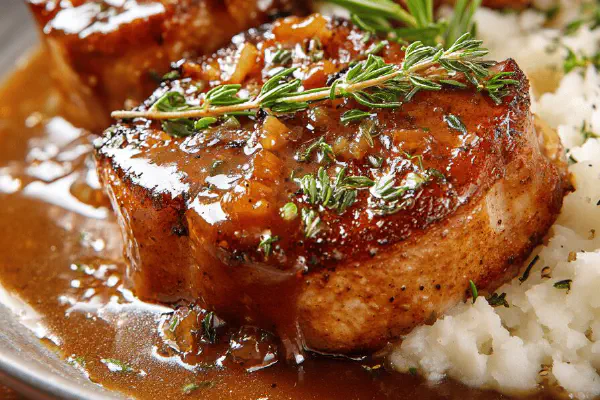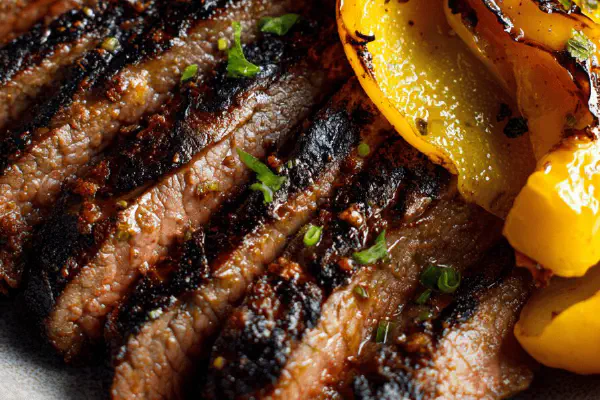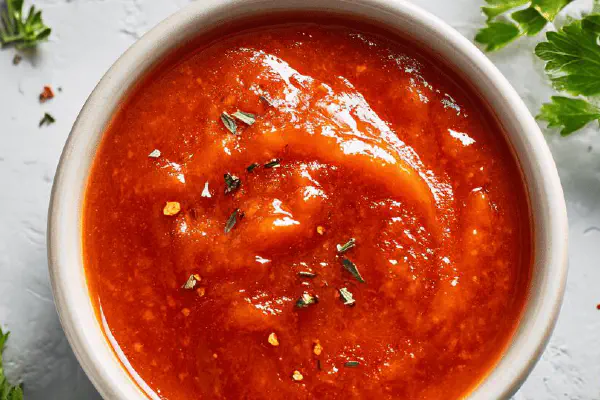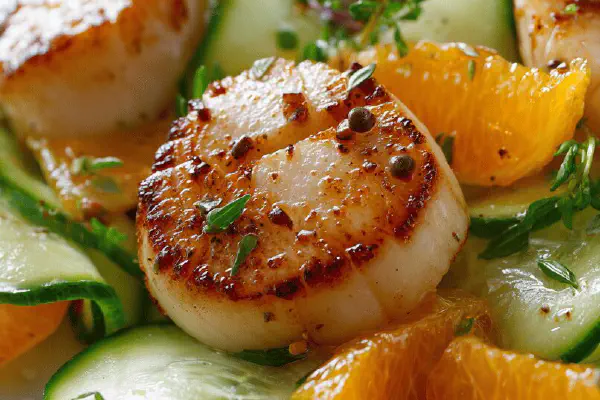Maple-Glazed Pork Medallions

By Emma
Certified Culinary Professional
Ingredients
- 125 ml vegetable broth
- 50 ml maple syrup
- 5 ml apple cider vinegar
- 5 ml Dijon mustard
- 5 ml tomato paste
- 5 ml arrowroot starch
- 1 pork tenderloin approx 400 g
- 25 ml olive oil
- 1 small shallot, finely chopped
- fresh thyme sprigs (optional)
About the ingredients
Method
- 1. Whisk vegetable broth, maple syrup, apple cider vinegar, Dijon mustard, tomato paste, and arrowroot starch in a bowl until smooth. Set aside. Note the gloss—arrowroot lends clarity to the sauce.
- 2. Trim pork tenderloin of silver skin. Cut into medallions about 1.5 cm thick. Pat dry firmly with paper towels. Moisture kills the sear, so don’t rush.
- 3. Heat olive oil over medium-high heat in heavy skillet. Once shimmering and fragrant, add half the medallions spaced out. Don’t crowd. Listen for that satisfying sizzle.
- 4. Sear pork about 2 minutes each side. Flip when golden brown crust forms. Medallions should spring back but still tender. Transfer to plate. Repeat with rest, adding a touch more oil if pan dry.
- 5. Reduce heat to medium. Toss in shallots, stirring 1-2 minutes until soft and translucent—not browned. Smell opens up here.
- 6. Pour in broth mixture, stir. Sauce will bubble and thicken. Throw in thyme sprigs if using. Return pork to pan, nestling into sauce.
- 7. Simmer gently 3-4 minutes, turning medallions once. Sauce should thicken to glossy coat consistency—sticks lightly to back of spoon.
- 8. Taste and adjust seasoning with salt and cracked black pepper. Remove thyme before serving.
- Serve with mashed sweet potatoes or roasted root vegetables. Perfect for clearing leftovers from fridge the next day; sauce reheats well, thickens more.
Cooking tips
Chef's notes
- 💡 Dry pork medallions thoroughly before searing. Water ruins the crust. Pat with paper towels, press firmly. Listen for that sharp sizzle when oil hits pan. If oil shimmers but no sizzle, pan’s not hot enough. Flip only after crust forms; it’ll spring back when ready. Medallions around 1.5 cm thick cook in roughly 4-5 minutes total. Thickness matters for even cooking. Too thick? Longer cook, risk dry edges. Thin won’t have crust. Timing and thickness play hand in hand.
- 💡 Use arrowroot starch cold whisked into liquids. Clumps kill the gloss. Pour starch mix in slowly after shallots sweat – no browning there, just translucent softness. Stir constantly, bubble to thicken. Arrowroot breaks down with aggressive boiling; simmer gently. Thickened sauce clings lightly to spoon back, glossy and translucent. Avoid cornstarch for cloudier glaze and gummy texture. This starch works at lower heat, stays clear even after cooling. Good for recipes where sauce clarity matters.
- 💡 Swap chicken broth with vegetable broth for milder, cleaner flavor. Works well here; pork and maple dominate anyway. Adjust salt since veg broth usually less salty. Maple syrup quantity depends on syrup intensity and sweetness level preferred. Less than expected better for tang balance; cider vinegar cuts it sharp, balances sweetness, and tenderizes meat too. Tomato paste adds umami depth, avoids ketchup sweetness and thickens slightly. Measured small amounts keep sauce tight, not sloppy.
- 💡 Olive oil preferred for sear’s clean brown flavor and higher smoke point than butter. Butter can be added at end if tolerated for richness, but risk burning during sear is higher. Start hot, medium-high heat. Add medallions spaced out, no crowding or steaming occurs. Listen for sizzle; pan silence means cool or too crowded. Add more oil mid-cook if dryness felt.Cooking on high too long burns edges; flip when crust golden, not black. Medallions will spring back slightly when touched, firm but with some give.
- 💡 Shallots over onions prevent harsh bite. Sweat gently 1-2 minutes, just soft translucent, no browning. Browning changes flavor profile, can overpower sauce’s subtle balance. Pour sauce mix into pan after shallots soften to deglaze fond, picking up caramelized bits. Nestle pork back carefully in sauce for even heat, coating each piece. Simmer gently 3-4 min, turning medallions once to ensure glaze thickens around. Remove thyme before serving to avoid woody bits. Salt and pepper last - taste as you go since broth, vinegar, and tomato paste contribute their own layers.
Common questions
Can I use cornstarch instead of arrowroot?
Cornstarch works but expect cloudy sauce. Arrowroot gives clear glossy finish and won’t gum up or break down quickly. If cooking over high heat or boiling hard, cornstarch can turn gluey. Use arrowroot for gentle simmer finish. Keep starch slurry cold and whisk well to avoid lumps before adding to pan.
How do I know when pork medallions are cooked?
Look for golden brown crust, sizzle sound fading. Medallions spring back when poked with finger or spatula, not squishy. Cut one to check pink center if unsure. Thickness affects time—about 2 min per side for 1.5 cm thick. Too short means raw inside. Longer cooks dry out edges. Visual and texture cues beat just watching clock.
What if I don’t have shallots?
Small sweet onion works but expect stronger aroma and bite. Cook lower and slow longer to soften and lessen harshness. Shallots dissolve better, add subtle sweetness without bitterness. Avoid yellow onions raw; they overpower sauce balance. Alternatively skip or use garlic sparingly, but flavor shifts. Shallot’s mildness key here.
How to store leftovers?
Cool quickly, transfer to airtight container. Refrigerate up to 2 days safely. Reheat gently in pan with splash of broth or water to loosen glaze. Microwave OK but glaze texture changes, can thicken oddly. Freeze only if you plan quick rescues; glaze may separate but stirs back after warming. Avoid reheating glaze at high temp or it thins out again.



